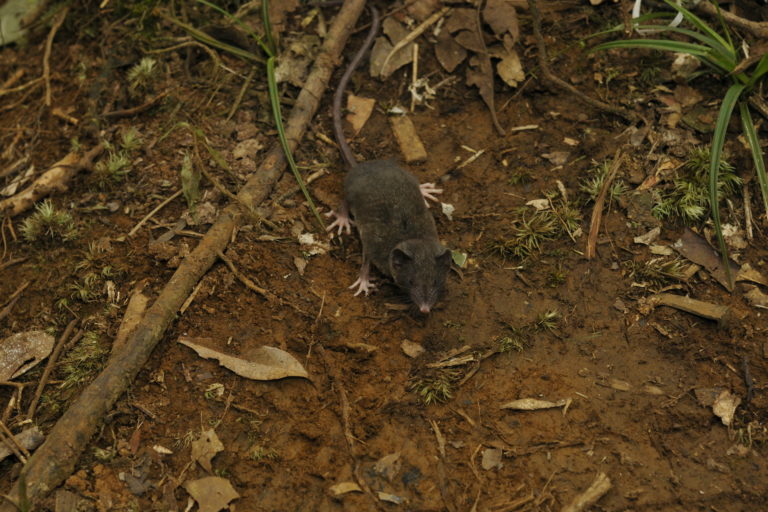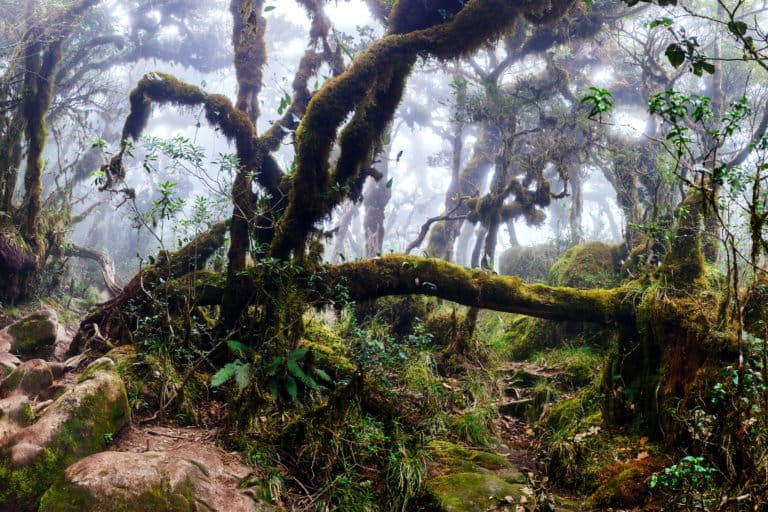
- A new study has described 14 new species of shrew endemic to the Indonesian island of Sulawesi.
- The shrews, all from the genus Crocidura, were identified from 1,368 specimens collected from 2010-2018 on 12 mountains and in two lowland areas across Sulawesi.
- This gives the island a much richer diversity of Crocidura shrew life than others in the Indonesian archipelago, which the researchers attribute to the varied landscape.
- They add it’s likely that even more species have yet to be described, and say there needs to be more research into Sulawesi’s biodiversity.
JAKARTA — Scientists have described 14 species of shrews new to science from the Indonesian biodiversity haven of Sulawesi Island.
The species-level description of the shrews from the genus Crocidura is the largest number of new mammals described in a scientific paper since 1931, according to the researchers from Indonesia, the U.S. and Australia, in a paper published Dec. 15.
“This [latest] finding has expanded the diversity of the shrews on Sulawesi three times more than is known from any other island,” co-author Anang S. Achmadi, a zoologist with the Indonesian Institute of Sciences (LIPI), said in a statement.


The scientists examined 1,368 specimens, most of which were collected from 12 mountains and in two lowland areas across Sulawesi between 2010 and 2018. Using distinct character data sets and DNA sequencing and looking at differences in external and cranial proportions, they identified 21 distinct species. The species often differed in the color of the pelage and areas of exposed skin, and to a lesser degree in the length and density of their fur, the paper said.
Seven of these small mammals had been previously described: five in 1921, a sixth in 1995, and the seventh in 2019. That meant that the 14 others were new to science.
The new species have been named Crocidura microelongata, C. quasielongata, C. pseudorhoditis, C. australis, C. pallida, C. baletei, C. mediocris, C. parva, C. tenebrosa, C. brevicauda, C. caudicrassa, C. normalis, C. ordinaria, and C. solita.
The researchers said multiple factors likely contributed to the richness in shrew species on Sulawesi, such as the varied elevation, the island’s mountainous and peninsular shape, and the expansive montane regions.
“It’s an exciting discovery, but was frustrating at times,” lead author Jacob Esselstyn, a mammalogist at Louisiana State University, in a statement.
“Usually, we discover one new species at a time, and there is a big thrill that comes from it. But in this case, it was overwhelming because for the first several years, we couldn’t figure out how many species there were,” he added.
The 21 species of Crocidura now known from Sulawesi dwarf the known shrew diversity of other islands, the authors write. The major islands in the Indonesian archipelago are somewhat smaller (Java) or considerably larger (Borneo and Sumatra) in land area than Sulawesi, and all have higher peaks than Sulawesi. Yet Borneo has only three known Crocidura species, Sumatra eight, and Java seven.
“Despite the many challenges, the evidence is clear that Sulawesi’s shrew diversity has been dramatically underestimated, and a lack of museum specimens was the foundational cause,” the paper says.


The researchers have called for further exploration of the evolutionary history of Sulawesi’s shrews as it might reveal fascinating details of the processes that produced such a rich radiation. Expanding the natural history collections would be needed to make ecological and evolutionary insights possible, they said.
“This study highlights the fact that if we wish to understand the true extent of biodiversity on Earth, large-scale, vouchered organismal inventories followed up with thorough examinations of genetic, morphological, and geographic traits are sorely needed in montane tropical regions, even for purportedly well-studied groups such as mammals,” the paper says.

Citation:
Esselstyn, J. A., Achmadi, A. S., Handika, H., Swanson, M. T., Giarla, T. C., & Rowe, K. C. (2021). Fourteen new, endemic species of shrew (Genus Crocidura) from Sulawesi reveal a spectacular island radiation. Bulletin of the American Museum of Natural History, 454(1), 1-108. doi:10.1206/0003-0090.454.1.1
New shrews just dropped: Sulawesi yields up 14 freshly described species
Source: Trends News

0 Comments